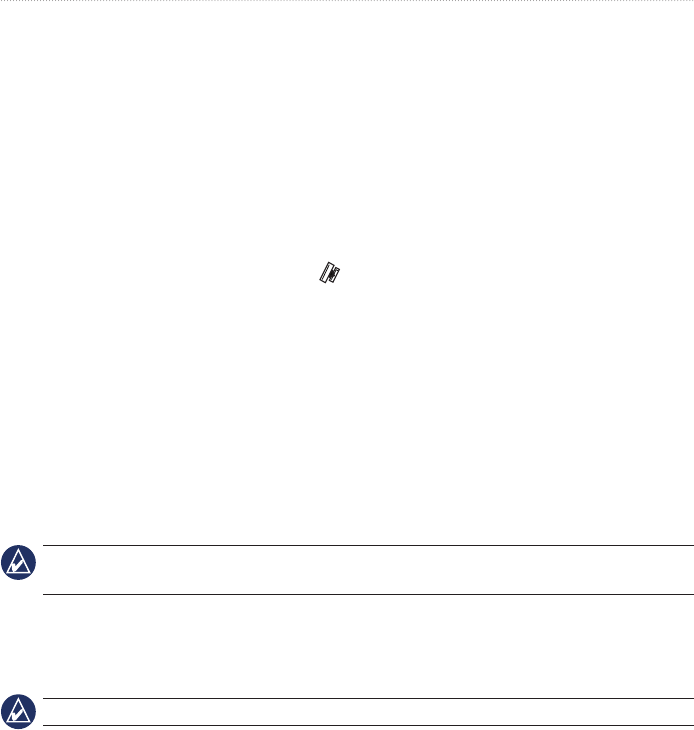
VHF 100/200 Series Owner’s Manual 29
Advanced Operation
Advanced Operation
NMEA 0183 and NMEA 2000
When you connect your radio to a NMEA 0183 network or a NMEA 2000 network (VHF
200/200i only), the following data can be transferred:
The radio can transfer received DSC distress and position information to any compatible
chartplotter.
The radio can receive GPS position. GPS position can be displayed on the Home screen
and is transmitted with DSC calls. The icon is displayed when GPS data is available,
and blinks when GPS data is not present. When GPS data is not present, the radio will
signal for you to enter your position manually every four hours.
For supported NMEA 0183 sentences and NMEA 2000 PGNs, see page 48. For more
information on connecting your radio to a NMEA network, see the VHF 100/200 Series
Installation Instructions.
Additional Functionality with Other Garmin Devices
Your VHF 100/200 series radio has additional capabilities when connected with other
Garmin devices.
NOTE: Your Garmin chartplotter may require a free software upgrade to use the functionality
listed in this section.
When you connect your radio to a Garmin chartplotter using NMEA 0183 or
NMEA 2000, your chartplotter can keep track of the current and previous positions of
the contacts in the radio directory.
TIP: Try using position tracking on up to three contacts to automate this process.
When your VHF 200 or VHF 200i is connected to a NMEA 2000 network with another
Garmin chartplotter, you can use the chartplotter interface to set up an individual routine
call.
As an additional safety measure, when your VHF 200 or VHF 200i is connected to a
NMEA 2000 network and you initiate a man-overboard distress call from your radio,
your Garmin chartplotter will display the man-overboard screen and prompt you to
navigate to the man-overboard point. If you have a Garmin autopilot system connected
to the network, it will prompt you to start a Williamson’s turn to the man-overboard
point.
•
•
•
•
•


















